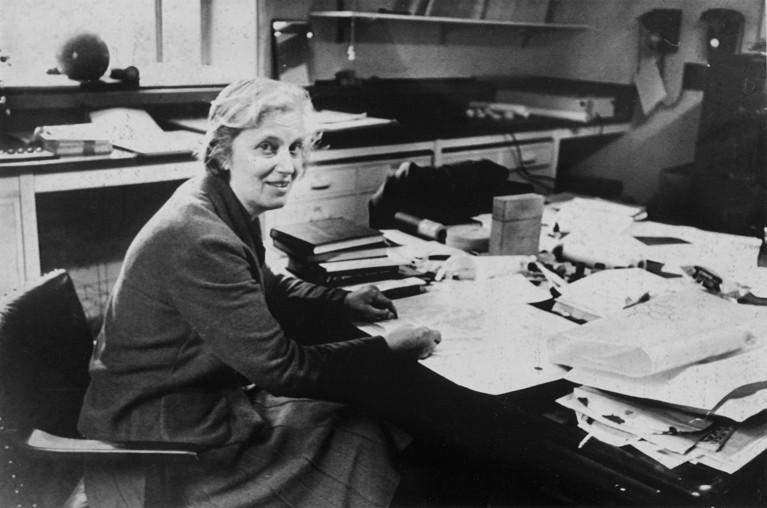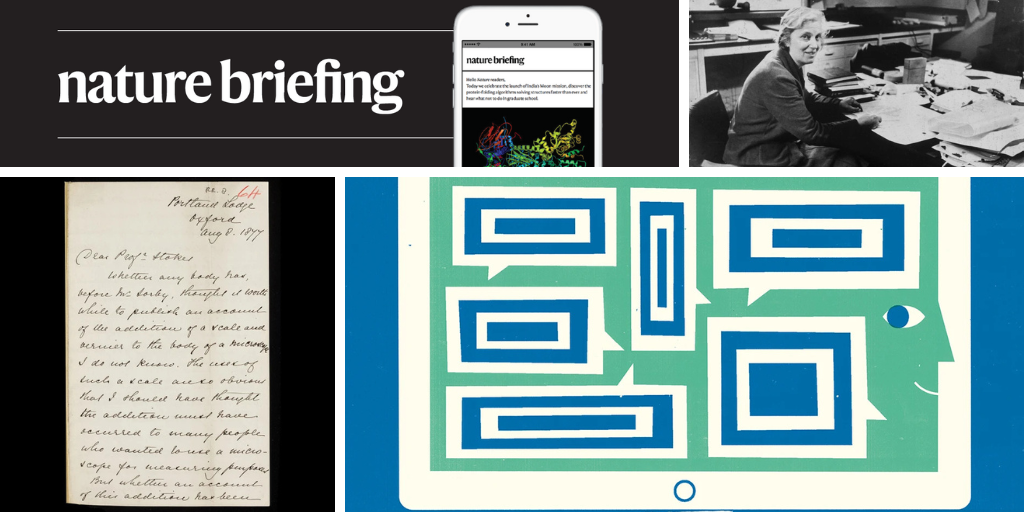Hello
Nature
readers, would you like to get this Briefing in your inbox free every day?
Sign up here
.

A review written by Dorothy Hodgkin (pictured around 1960) is among a trove of reports released by the Royal Society.
Credit: Daily Herald Archive/National Science & Media Museum/SSPL via Getty
The UK Royal Society has unsealed more than 1,600 peer review reports dating from 1949 to 1954, including Dorothy Hodgkin’s review of Watson and Crick’s manuscript of the structure of DNA and warring comments from two reviewers on a 1951 paper by Alan Turing (all of which he seems to have ignored). The reports
offer a glimpse into what the peer-review process was like before it was formalized in the 1970s
. “There’s really this understanding in the nineteenth century and very early twentieth century that the peer review is a real discussion,” says Louisiane Ferlier, the society’s digital resources manager. “After that, it becomes a way of managing the influx of papers for the journal.”
Geophysicists and archaeologists have collaborated to discover
an undisturbed burial site beneath the elaborate rock-cut Treasury building in Petra
. After a non-invasive scan revealed temptingly tomb-like voids, digs confirmed the presence of 12 skeletal remains and a collection of grave artefacts. Researchers estimate that the remains might be from the height of the Nabataean society, which built the mountain fortress of Petra in what is now Jordan.
The New York Times | 4 min read
Animals on the sea floor
can thrive in subterranean cavities and passages near hydrothermal vents
— hinting at how creatures colonize newly erupted vents. Marine biologists used a crowbar (attached to a sophisticated robotic submarine) to lift up a piece of basalt on the floor of the Pacific Ocean. Doing so unearthed a species of tubeworm (
Oasisia alvinae
) and its larvae, as well as limpets and polychaetes. Researchers had thought that fluid beneath the seabed would be too hot to sustain life, but the water was a pleasant 18 ℃. The findings hint that larvae might be able to travel through a ‘subway system’ of channels between rocks — which could be destroyed by deep-sea mining.
Reference:
Nature Communications
paper
Features & opinion
Releasing biology software publicly for anyone to use is not as straightforward as it might seem, but
there are ways to smooth the path
. That includes factoring in maintenance time, simplifying installation and automating testing. And the outcome is worth the effort, say scientists. “The present and the future of biological understanding depend on software,” says bioinformatician Titus Brown.
“There’s no culture of results. Why? Because talk is fun, results are hard and people hate accountability,” writes global-health leader Peter Singer, who was a special adviser for six years to the director-general of the World Health Organization (WHO). Singer argues that instead of introducing more targets, such as those in the newly-approved Pact for the Future,
the United Nations (UN) should focus on existing ones that aren’t being met
. Namely those that fall under the Sustainable Development Goals, only 17% of which are on track. Reflecting on his own efforts to try to turn the WHO into a results-based organization, Singer calls out the UN for dragging its feet. “I think the UN’s plans need another acronym: GSD, for Get Stuff Done.”
Awareness is growing that birds do more than aimlessly tweet. Some species whisper between themselves, sing to their unhatched eggs and develop ‘familects’ of sounds shared by a family unit. Driven by the urge to understand
whether bird vocalizations can be considered ‘language’
— and to assist with the huge part of bird-watching that involves simply listening — ornithologists and artificial-intelligence researchers are working to decode the meaning.
Today I’m pondering the
Prada spacesuits
that NASA astronauts will wear on the Artemis mission to the Moon planned for 2026. Fair warning: they look a lot like regular spacesuits, as do the
Pierre Cardin suits
that will be used by European Space Agency astronauts in training. But looks aren’t everything, says astronaut Matthias Maurer. “You can tell the difference if it was just made by engineers or if there’s also somebody who knows how to work the textile,” he said at a try-on for the Cardin suit. “I always had pressure points, and now it feels very nice inside.”
Let me know what you’d like to see get a designer makeover — plus any other feedback on this newsletter — at
[email protected]
.
Thanks for reading,
Flora Graham, senior editor, Nature Briefing
With contributions by Jacob Smith
Want more? Sign up to our other free Nature Briefing newsletters:
•
Nature Briefing: Careers
— insights, advice and award-winning journalism to help you optimize your working life
•
Nature Briefing: Microbiology
— the most abundant living entities on our planet — microorganisms — and the role they play in health, the environment and food systems
•
Nature Briefing: Anthropocene
— climate change, biodiversity, sustainability and geoengineering
•
Nature Briefing: AI & Robotics
— 100% written by humans, of course
•
Nature Briefing: Cancer
— a weekly newsletter written with cancer researchers in mind
•
Nature Briefing: Translational Research
— covers biotechnology, drug discovery and pharma


